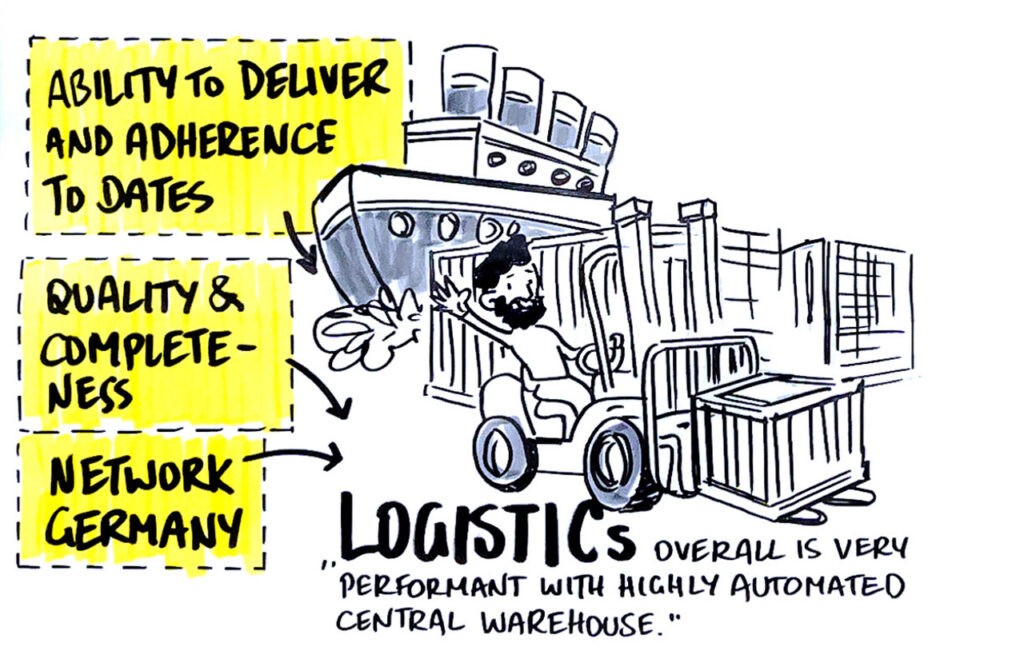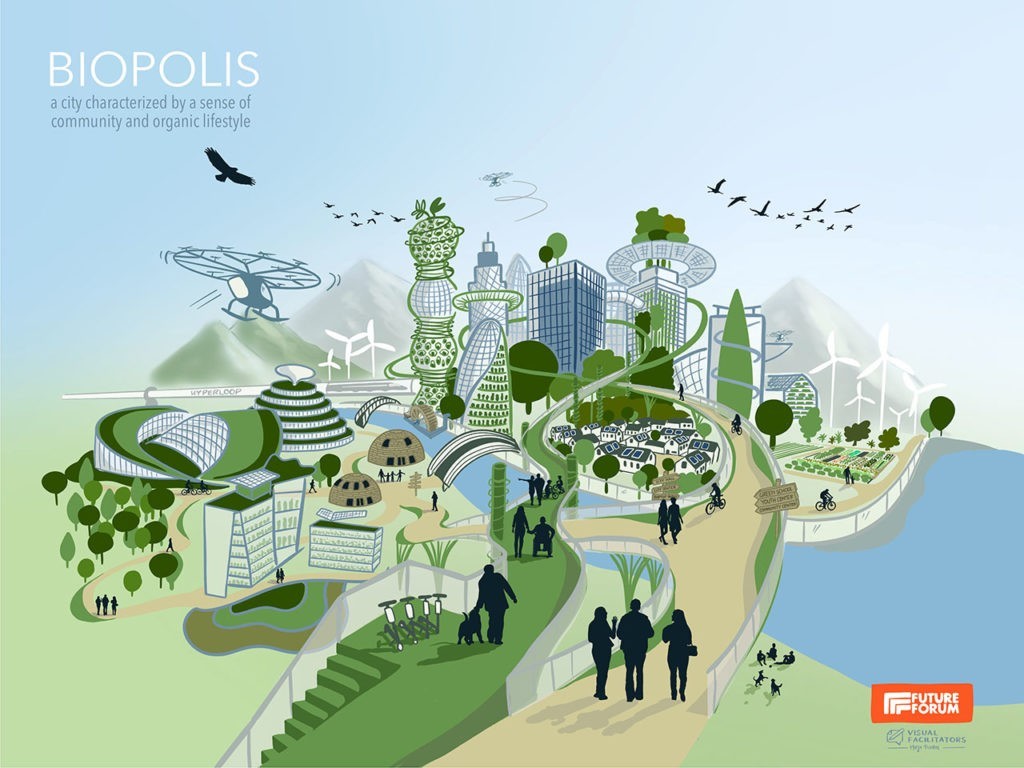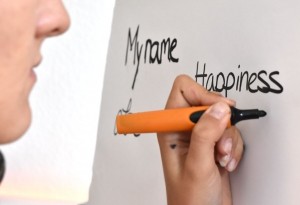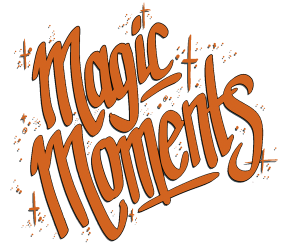Visual Note Taking, also known as sketchnoting, is a technique of capturing and organizing information through hand-drawn images and text in real time.
This method can be used by executives, managers, project managers, students and teachers to communicate ideas more clearly and understand them better.

What is Visual Note Taking?
Content
ToggleVisual Note Taking is more than just drawing pictures. It is a method where you actively listen and then visualize the key points.
Unlike conventional note taking, Visual Note Taking combines text and images. This activates both the right and left hemispheres of the brain. This leads to better information retention and deeper understanding.
The origins of the sketchnoting method do not go back a long way. It has gained popularity only since 2012 thanks to the work of pioneers such as Mike Rohde and his book “The Sketchnote Handbook”.
And what is not Visual Note Taking? By definition, sketchnoting is a personal technique used by individuals for themselves (I sketch my notes for myself). In other words: it is not graphic recording or any other kind of collaborative, collective visual tool. Graphic Recording, for example, only serves the group and does not reflect personal likes or opinions of the note taker.
The advantages of Visual Note Taking
A major benefit of Visual Note Taking is improved memory performance. Studies show that people who doodle during a task retain 29% more information than those who do not.
This technique promotes creative thinking and problem solving by activating both hemispheres of the brain simultaneously.
In addition, Visual Note Taking helps to organize information efficiently and increases concentration and engagement. It enables clear communication of ideas and improves team collaboration.
This method also develops visual literacy and boosts self-confidence.
To summarize:
- Improved memory performance through simultaneous activation of both hemispheres of the brain
- Efficient organization of information and increased concentration
- Promotes creativity and problem solving
- Step-by-step guide to visual note taking
Preparing the materials
Start by selecting the right materials. You will need paper, pens and markers.
If you want to work digitally, iPads / tablets and corresponding apps such as Procreate or Adobe Fresco are ideal. Choose a small color palette to make your drawings uniform.
Keep your materials organized so that you can easily access them while drawing.
Planning
Plan in advance how you want to use your drawing space.Prepare and organize your materials, and be ready for consistent drawing.
Listening and drawing
Listening is just as important as the drawing itself. Capture the most important content and prioritize it.
Use different sizes and colors to represent the hierarchy of information. Don’t worry if your first drawings aren’t perfect – practice makes perfect.
Repeat and improve
After you have created your first sketchnotes, reflect on your work and think about how you can improve it. Listen to the presentation again. Add missing details or improve the existing drawings.
Continuous practice and learning are crucial to improve your skills.
Remember: Visual Note Taking is an ongoing exercise that gets better and better through repetition and improvement.
Visual Note Taking techniques and methods
Basic techniques
The basic techniques of Visual Note Taking include structuring and arranging information. Symbols and pictograms help to present complex content in a simple way.
Colors and shading can be used to distinguish different levels of information.
Advanced techniques
Advanced techniques include the integration of layers (when using apps), shadows and sophisticated metaphors to link ideas and visualize the bigger images that you hear between the lines.
Creative approaches such as developing your own style and combining visual and textual elements can make your notes even more meaningful.
Remember: you can use basic and advanced techniques to present complex content clearly and comprehensibly.
Tools and materials for Visual Note Takers
Analog Visual Note Taking
Notebooks, pens and markers are the basic tools for analog visual note taking.
Notebooks with thick pages are particularly suitable as they prevent the color from bleeding through. Plenty of suitable materials can be found at neuland.com
Digital Visual Note Taking
Digital tools offer many advantages. These include the simple editing and saving of notes.
Popular software and apps for digital visual note taking include Procreate, Concepts, Adobe Fresco and Microsoft OneNote.
Application Examples and Case Studies
Education
In educational institutions, Visual Note Taking can help improve learning and teaching. Using this “learning tool”, Students can better understand and retain complex concepts.
Teachers can present the information in an engaging way.
Companies
Visual Note Taking can increase the effectiveness of meetings and workshops in companies.
It helps with the development and implementation of strategies and processes. This promotes communication and collaboration.
Personal use
In everyday life, Visual Note Taking can be used to plan and organize personal projects. It helps to structure thoughts and define goals more clearly.
Tips and tricks for beginners
First steps
Getting started with Visual Note Taking can be overwhelming. It’s important to start simple. Practice regularly and don’t be discouraged by initial mistakes.
Practice makes perfect
Regular practice is the key to improving your skills. Take advantage of various resources and learning opportunities to continuously develop your skills.
Quick tips
Be bold and try different styles. Use simple images to make connections to the learning content.
Remember that it’s about the ideas, not any artistry. Sketchnoting is not illustration or art.
Conclusion
Visual Note Taking is an effective method for capturing, organizing and communicating information. It offers numerous advantages for various areas of application.
Through continuous practice and application, you can improve your skills and get the most out of the technique. Future developments and trends offer exciting opportunities to further exploit the potential of Visual Note Taking.
Remember, Visual Note Taking is a personal practice. Should you have meetings, workshops or collaborative projects, consider booking a Graphic Recording:
Discover Visual Note Taking in the Middle East with VISUAL FACILITATORS

Do you want to support your meetings and workshops in Dubai or the Middle East so that complex content is captured in an easy and understandable way? Graphic Recording from VISUAL FACILITATORS is the solution.
With our many years of experience, we help you to visualize your messages clearly and concisely.
Our team of over 35 experts – consisting of visual strategists, moderators and graphic recorders – will help you to make your meetings, workshops and business processes more effective.
Our services include:
- Experience from over 10,000 projects: We know what works.
- Cross-sector expertise: Whether logistics, services or any other industry.
- Global availability: Work with us online or in person, anywhere in the world.
Visual Strategy improves communication in your company. Our visualizations make even the most complex topics tangible.
Your employees and customers will understand the content better. This promotes collaboration and contributes to better decisions.
Our visualizations are particularly valuable for:
- Strategy development: Make your vision visible.
- Corporate culture: Strengthen team cohesion.
- Supporting change: Illustrate change processes clearly and concisely.
These are the advantages for our customers:
- Explain complex things simply: Speed up your communication.
- Reach people: Promote a healthy corporate culture.
- Gain clarity: Help your employees and customers understand your vision.
Book visual strategy services by VISUAL FACILITATORS and experience how visualizations can boost your processes.
FAQ
Visual Note Taking is a personal technique in which information is combined with hand-drawn images and text and captured in real time. This method helps to better understand and retain content as both hemispheres of the brain are activated simultaneously.
Visual Note Taking is often used by individuals to visually display personal notes during a presentation or meeting. Graphic Recording, on the other hand, is created by a professional graphic facilitator to visually support group dialog or a larger audience during an event.




